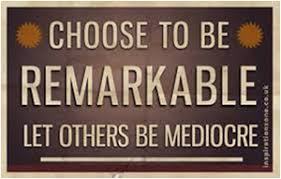Are you tired of answering your own questions
in meetings?
The most likely reason for your problem is a lack of
engagement, or the old word, involvement, on the part of your team. But don’t
believe for 1 second that you are alone in this situation!
A Gallup poll from 2013 found that only 13 percent of
employees are engaged at work. That’s less than two
out of every 10 employees at any given company. The survey also found that
almost a quarter of employees (24 percent) were “actively disengaged” at work.
Not only did those employees lack motivation, they also were unhappy or unproductive
in a way that could potentially affect other employees. Basically, negativity
breeds negativity, especially in the workplace.
There are a few things you can do to change this situation,
that are reasonably simple to implement.
1. Book a Square Wheels session with me.
That
might seem like shameless self-promotion, but the reality is that unless you
get some help to first level the playing field, nothing else you do will be
effective. This is a session that can be run in as little as an hour, depending
on the size of the group we are working with. In it we use a cartoon drawing
and / or a Lego model (yes, you read both of those correctly!) to facilitate an
interactive discussion that is designed to measure the current level of
engagement, identify the primary reasons for any lack of engagement, and
involve your team in designing workable solutions to solve their own issues. This
is a ridiculously simple, yet highly effective, way to facilitate meaningful
conversations, create new ideas, and build a sense of ownership within your
team;
2. Change your culture.
These
days, very few of us will dive into a pool if we cannot see what is under the
surface. We only take the plunge if, and when, we decide it is safe to do so,
and in a lot of teams, group activities and meetings are a bit like diving into
a pool. Unless your team feels confident and safe about sharing their thoughts
and ideas, they are going to stay on the pool lounger and you are going to
continue answering your own questions! After a Square Wheels session, it will
be far easier to make your team feel safe, and create the environment to grow
participation, and engagement;
3. Move your meeting focus from “interesting”
to “interested”.
For
most people, just the idea of a “lecture” style meeting is enough to put them
to sleep. But is this because the material is not interesting enough or is it
that they feel you are not interested in their point of view? The difference
between "interesting" and "interested" is critical for
creating participation and involvement. If you want to engage people,
concentrate on being more interested and spend less time trying to be
interesting, or deliver, interesting content;
4. Make the meeting, or the problem, “ours”.
Very
little creates more of a barrier between a manager and the team than using the
word "I." Leaders are often frustrated by the casual and
disinterested attitudes of team members toward solving problems and taking
action. One reason for this can be the language they regularly use, and the
impressions it creates. People are much more willing to participate and
take ownership when the problem is "ours," the challenge is for
"us" to overcome, or the question is one that "we" must
answer;
5. Make it happen, and keep it
happening.
Knowing a life jacket will save you from drowning is
one thing, but taking action by putting it on and inflating it is what really
counts! Imagine meeting with your team to discuss ideas for improving
efficiency. Everyone is involved and some great suggestions and insights are
tabled. Does that make the session a success? Unfortunately not. Generating
solutions from engaged employees is the first (vital) step in the process, but
that level of involvement and participation is unlikely to be repeated without
action and execution. Getting people involved is the first part. To keep them
switched on, you must follow through obviously and quickly. And as your team
sees the solutions they proposed and developed being implemented, they are
naturally and totally invested in the successful outcomes of those solutions.
If your
team is stuck, I can help you get things rolling again. If you are trying to
implement change, generate improvement, or grow team engagement, a Square
Wheels session will help you to have meaningful planning sessions, brainstorm
new ideas, and successfully introduce and implement change. People resist
change being done to them, or being forced on them – when people are involved with
the change, it is much more likely to be successful.
So, if you are tired of
having to force conversations, and demand participation, leave a comment below,
or on the Version 8 Coaching & Training Facebook page, and I’ll make
contact to discuss how Square Wheels can help you.

